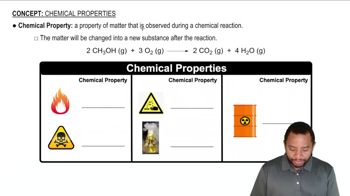Here are the essential concepts you must grasp in order to answer the question correctly.
Ionic vs. Molecular Compounds
Ionic compounds are formed from the electrostatic attraction between positively and negatively charged ions, typically involving a metal and a non-metal. In contrast, molecular compounds consist of molecules formed by covalent bonds between non-metal atoms. Understanding the distinction helps in predicting the properties and structures of compounds.
Recommended video:
Chemical Nomenclature
Chemical nomenclature is the system of naming chemical compounds based on their composition and structure. For ionic compounds, the name typically includes the cation followed by the anion, while molecular compounds use prefixes to denote the number of atoms. Recognizing the naming conventions aids in identifying the type of compound.
Recommended video:
Oxidation States
Oxidation states indicate the degree of oxidation of an atom in a compound, which helps in determining the types of bonds formed. In K2O2, potassium (K) has an oxidation state of +1, while oxygen (O) in peroxides has an oxidation state of -1. Understanding oxidation states is crucial for predicting the ionic or molecular nature of a compound.
Recommended video:
 Verified step by step guidance
Verified step by step guidance


